
How to pair cinquefoil or potentillas?
Discover 7 ideas for garden and terrace combinations
Contents
Cinquefoils are charming little shrubs that attract many gardeners with their generous and long flowering periods. From May to September, they produce beautiful white, yellow, orange, or red flowers depending on the variety. With its compact habit, the potentilla is perfect for a flowerbed, as a border, on a slope, a low wall, or even in a container. Hardy and drought-resistant, this shrub has just one requirement: well-drained soil without excess moisture. This bushy plant indeed dislikes heavy, waterlogged soils and prefers poor, stony, or sandy soil. Discover our 7 ideas for pairing potentilla in the garden or on the terrace.
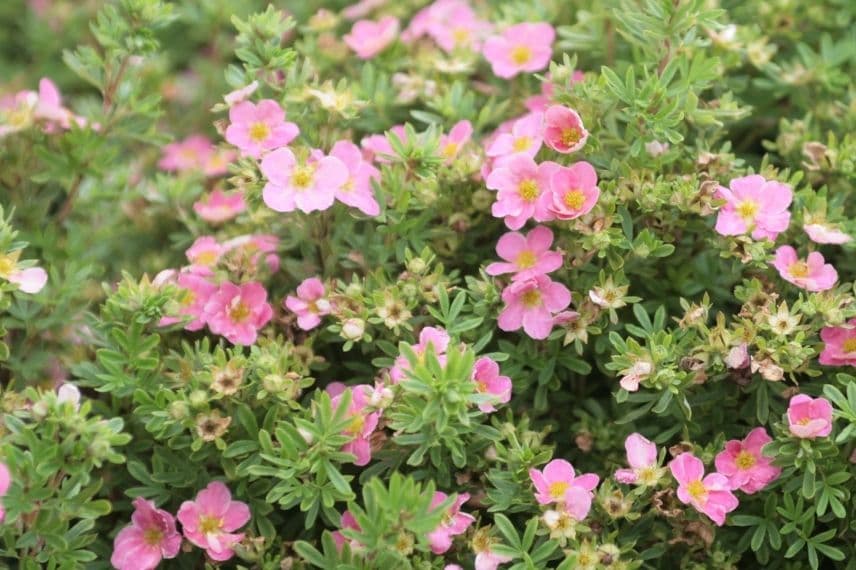
Potentilla fruticosa ‘Lovely Pink’
In a romantic garden
With its lovely rounded shape and long flowering period, the cinquefoil will naturally find its place in a romantic flowerbed. In partial shade, it is preferable to plant pink-flowered cinquefoils such as Potentilla fruticosa ‘Lovely Pink’ or the surprising Potentilla fruticosa ‘Double Punch Pastel’ with small flowers tinged with pale pink. Full sun may cause the flowering to fade, so it is better to plant varieties with white flowers, such as the beautiful Potentilla fruticosa ‘Creme brulée’ or the magnificent ‘Double Punch Cream’.
For a successful combination, you can pair them with Lupins such as the cultivar ‘La Chatelaine rose’, beautiful Peonies, and a Daylily ‘Catherine Woodbury’. You can also plant other beautiful perennials like a Coreopsis ‘Limerock Passion’, hardy geraniums, and not to forget white or pink ornamental garlic bulbs.
In terms of shrubs, you can create a fairy-tale scene by cultivating nearby a Symphoricarpos, a Spiraea, a Lavatera, a Weigela, a shrubby Veronica, a Philadelphus, and an Abelia. For a perfect decor, add a Hydrangea, a Buddleia that will attract butterflies, and not to forget the magnificent English Roses. To conclude the flowering, feel free to plant a Hibiscus and an autumn Aster.
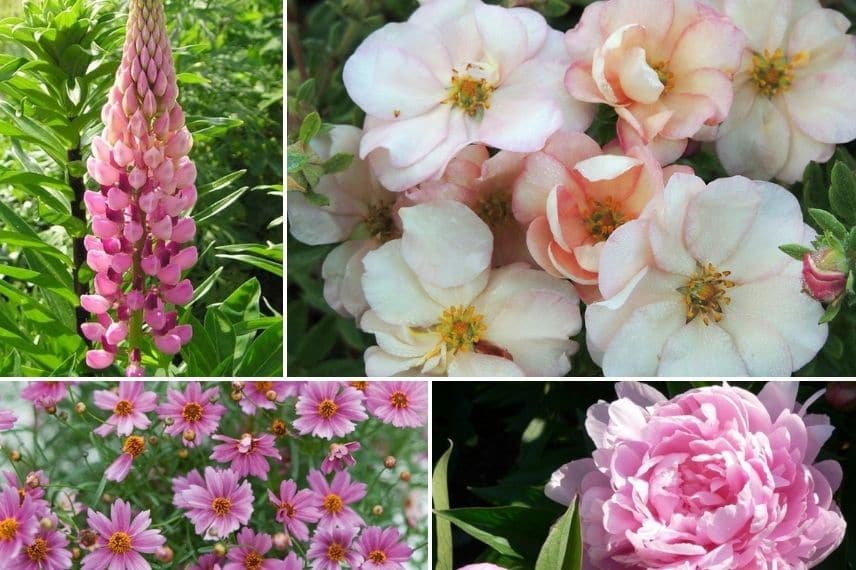
Lupin ‘La Chatelaine rose’, Potentilla fruticosa ‘Double Punch Pastel’, Coreopsis ‘Limerock Passion’ and Peony lactiflora ‘Sarah Bernhardt’
In a golden yellow garden
Yellow flowering cinquefoils are ideal for adding sunshine to the garden. For example, the Potentilla fruticosa ‘Citrus Tart’ with its small bright yellow double flowers, or the variety ‘Primrose Beauty’ with its delicate pale yellow flowering.
They can be combined in a golden bed with Sedums, a Erysimum ‘Zwerg Jaune’ (false wallflower), a Santolina virens, a Spurge, a Day Lily, a Jerusalem Sage, and some grasses. To create a beautiful decorative and flowering scene, add a Achillea ‘Little Moonshine’, a few Iris germanica ‘Grand Canari’, Rudbeckias, and Kniphofias.
To form a beautiful flowering shrub bed, pair it with a St. John’s Wort, a Buddleia weyeriana ‘Sungold’, a Weigela middendorffiana, a small Daphne gemmata ‘Royal Crown’, and a Tenerife Broom. For continuous flowering, add a Mahonia with evergreen foliage and an Edgeworthia chrysantha ‘Nanjing Gold’ that will bloom at the end of winter to close the season.

Potentilla fruticosa ‘Citrus Tart’, Erysimum ‘Zwerg Jaune’, Santolina virens, Daphne gemmata ‘Royal Crown’, and Achillea ‘Little Moonshine’
Discover other Potentilla - Cinquefoils
View all →Available in 0 sizes
Available in 1 sizes
Available in 1 sizes
Available in 1 sizes
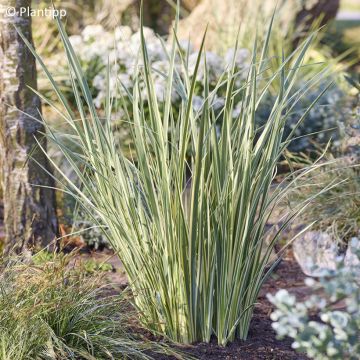
Available in 1 sizes
Available in 1 sizes
Available in 1 sizes
Available in 1 sizes
Available in 2 sizes
Available in 1 sizes
In an orange garden
If you dream of creating a garden in orange tones, apricot Potentillas are perfect for bringing a warm atmosphere. Such as Potentilla fruticosa ‘Mango Tango’ or the variety ‘Hopley’s Orange’. To prevent the sun from fading their beautiful saffron colours, plant them preferably in partial shade.
You can pair them with Erysimum ‘Zwerg Mango’ (false wallflower), an Oriental Poppy ‘Harvest Moon’, a Euphorbia ‘griffithii Dixter’, a Daylily ‘Apricot Beauty’, and a crocosmia. You can also combine them with a Kniphofia ‘Alcazar’, a Helianthemum ‘Bronzeteppich’, and a Shrubby Sage ‘California Sunset’. For originality, plant a Hedychium coccineum ‘Tara’ with its surprising yellow-orange flowers and some grasses.
In a shrub border, it will create a colourful and warm atmosphere with a Buddleia macrostachya, an Abelia grandiflora ‘Sunny Charm’, a Berberis linearifolia ‘Orange King’, and a Cytisus scoparius ‘Goldfinch’ or broom.
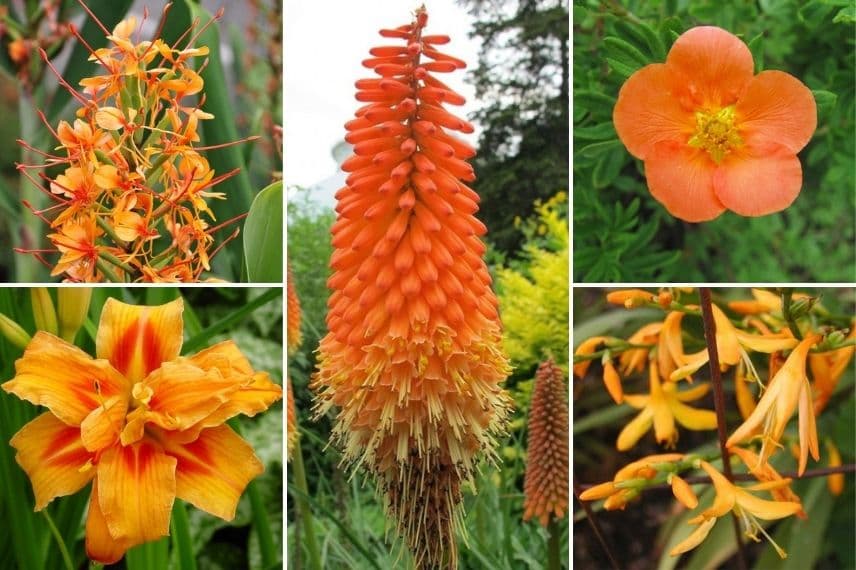
Hedychium coccineum ‘Tara’, Daylily ‘Apricot Beauty’, Kniphofia ‘Alcazar’, Potentilla ‘Hopley’s Orange’, Crocosmia ‘George Davison’
In a blue and white garden
Gardens in blue and white tones create an impression of calm and serenity. The white-flowered cinquefoils will make a statement in this setting, such as the variety ‘White Lady’ with its dark green foliage or ‘Abbotswood’ whose green leaves have silver highlights. Moreover, cinquefoils require little maintenance and are perfect for a natural garden, thriving in full sun or partial shade, in well-draining soil.
They can be paired with a Bowles Mauve wallflower Erysimum, a lavender, a Ceratostigma, an Anchusa, German Iris, and hardy geraniums. To add variety in shapes, include some ornamental allium bulbs, as well as a sea holly, Iberis, and an Achillea ‘Perry’s White’. You can also sow annuals like Love-in-a-Mist, Flax, Alyssum, Cornflowers, and Cosmos ‘Purity’.
To create a stunning shrub border, plant a Mock Orange, a Lavatera, a Hydrangea, a Caryopteris, an Olearia, a shrubby Veronica, a Buddleia, and a Perovskia. To extend the flowering into autumn, feel free to plant an Aster and a Hibiscus.

A blue and white border – on the right: Potentilla ‘Abbotswood’ and Achillea ‘Perry’s White’
In a rockery or on a bank
Potentillas thrive in light, well-drained soil, making them perfect candidates for enhancing a bank or rock garden. It’s worth noting that the colourful varieties tend to fade slightly in overly sunny conditions and will be more vibrant in partial shade. Once well-established, the potentilla will withstand summer drought perfectly. The shrubby potentilla varieties will form a lovely rounded, bushy, and dense shrub, while the perennial potentillas, such as Potentilla megalantha, create a low, spreading cushion, primarily used as groundcover.
Potentillas will look stunning alongside one or more Sedums, a Spurge, a grass, an Achillea ‘kellereri’, Helianthemums, or Cistus. To combine beauty and fragrance, you can also add some aromatic perennial plants like Thyme, lavender, and rosemary.
Additionally, you can pair shrub potentillas with a Juniper, dwarf conifers, Berberis, Ceanothus, a St John’s Wort, not to mention landscape shrub roses.
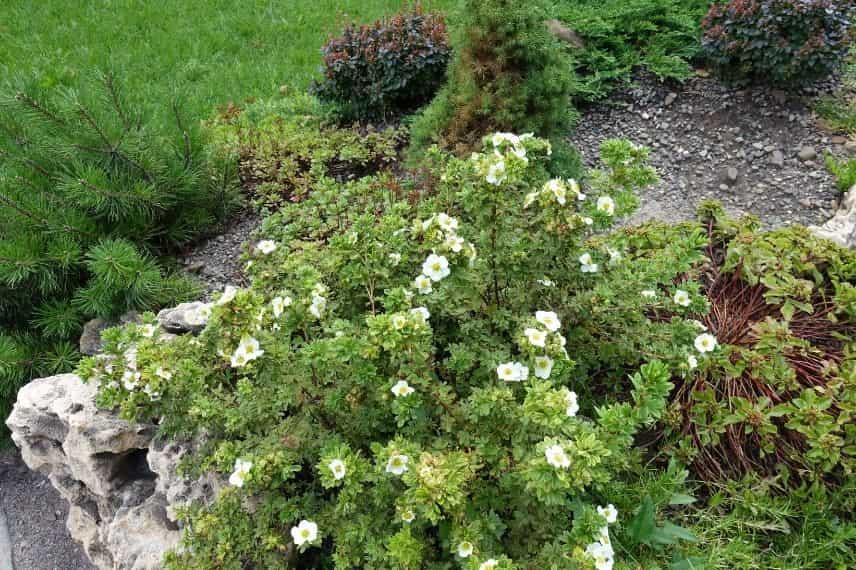
Potentilla fruticosa ‘White Lady’ in a rock garden alongside dwarf conifers and Berberis
On a a low wall
Originating from montane regions, the shrubby potentilla is perfectly suited for cultivation on a wall, particularly due to its good drought resistance. Note that the perennial potentillas, which are smaller than the shrubby ones, can also grow between the gaps in stones. They will pair beautifully with Sedums, an Erigeron karvinskianus, a creeping Gypsophila or cushion Gypsophila, Iberis, a Spanish lawn, an Aubrieta, an Asplenium trichomanes, Alpine Asters, Dianthus, and an Stachys. To create a lovely floral cascade, also plant Helianthemums, a wall Campanula, a Cooper’s Purslane, and beautiful moss Phlox. For a perfect backdrop, place a shrubby potentilla, Cistus, and a garden Valerian in the background.
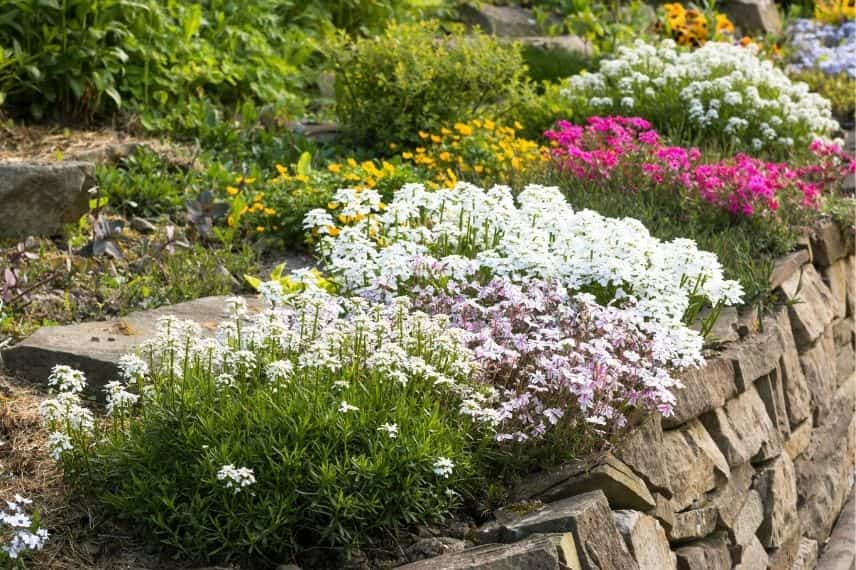
Moss Phlox, Iberis, Dianthus, and a Potentilla fruticosa ‘Goldteppich’ in the background
In a container
Potentillas are small bushes that are easy to grow in pots and require little maintenance. Very frost-resistant, the potentilla will thrive in well-drained soil and in sunny or partially shaded locations. It will provide a long and decorative flowering display on the terrace or balcony. You can plant it alone or alongside other perennial plants with similar needs, such as a Sedum, a Thyme, a lavender, an Abelia, a trailing Campanula, and Dianthus. It will also pair well with a Berberis, an Iberis, a Aubrieta, an ornamental grass, a hardy geranium, and a small Aster Alpinus.
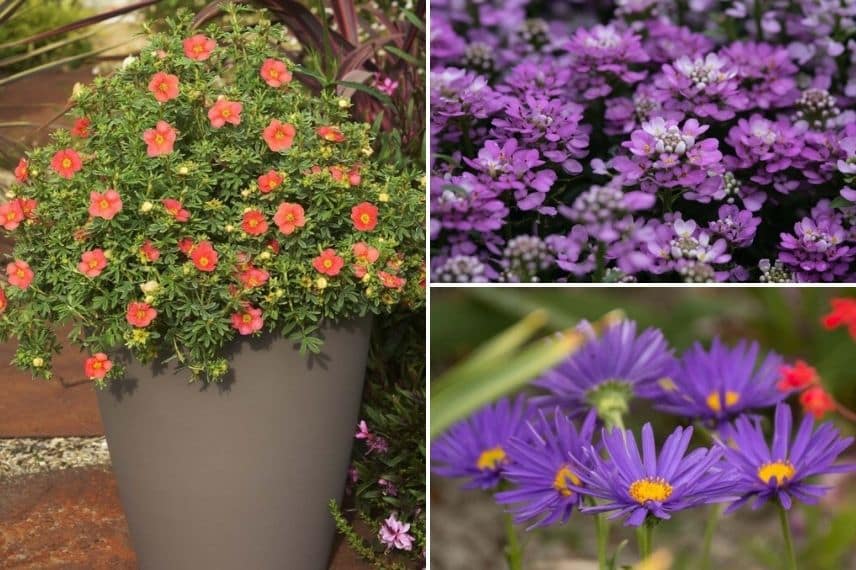
Potentilla fruticosa ‘Red’issima’, Iberis ‘Absolutely Amethyst’ and Aster alpinus ‘Blue Beauty’
For further reading
- Find all our varieties of shrubby potentillas and perennial potentillas.
- To learn everything about these beautiful shrubs, browse our article on potentillas: planting, maintaining, pruning.
- Discover our tips and buying guide to choose a shrubby potentilla.
- Subscribe!
- Contents

































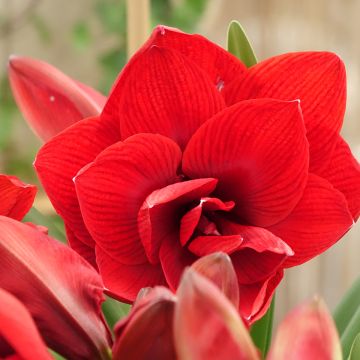


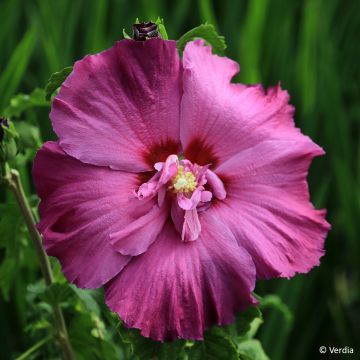

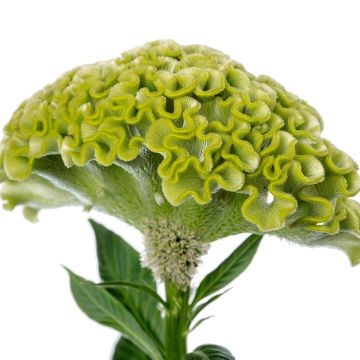
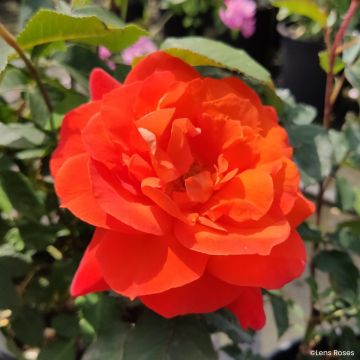

Comments